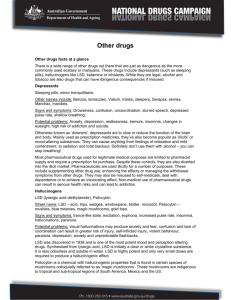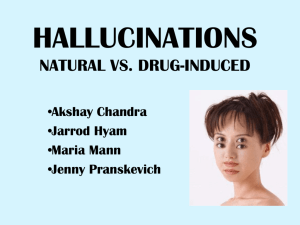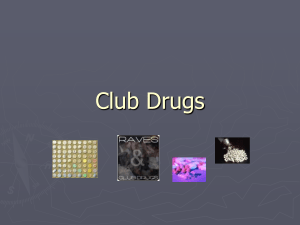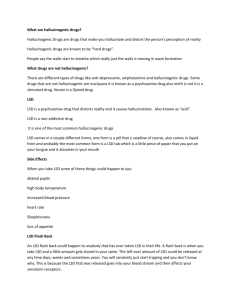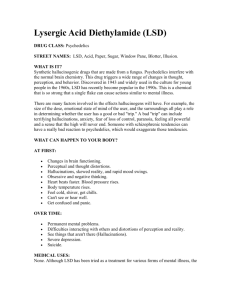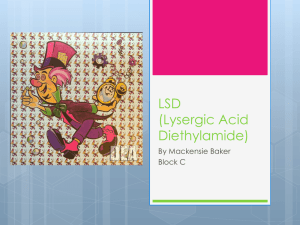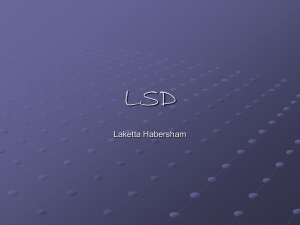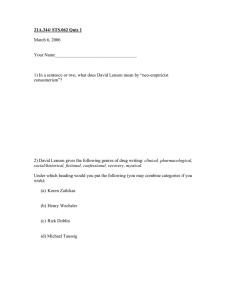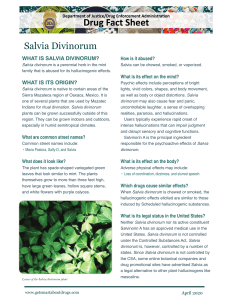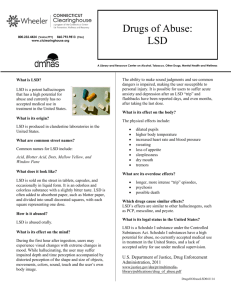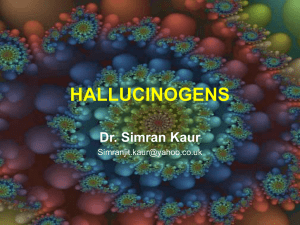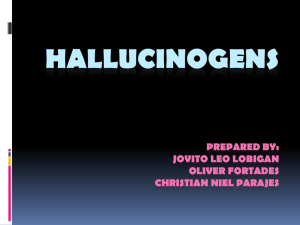Hallucinogens fact sheet
advertisement
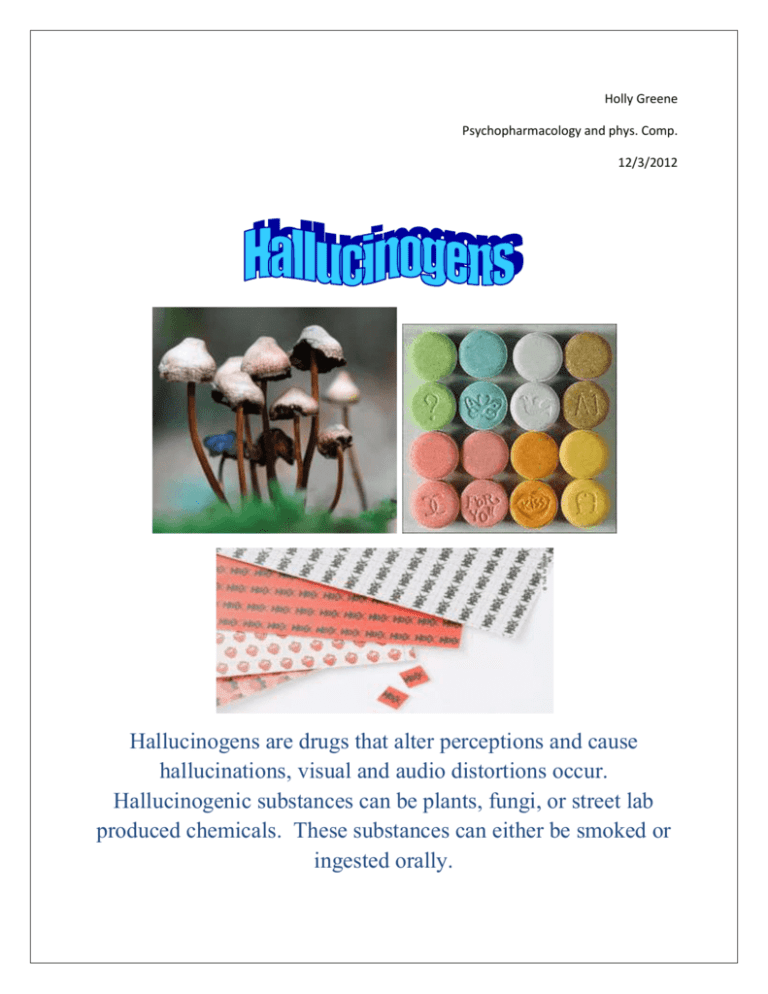
Holly Greene Psychopharmacology and phys. Comp. 12/3/2012 Hallucinogens are drugs that alter perceptions and cause hallucinations, visual and audio distortions occur. Hallucinogenic substances can be plants, fungi, or street lab produced chemicals. These substances can either be smoked or ingested orally. Drugs that cause hallucinations LSD (Lysergic acid diethylamide), Mescaline (peyote), Psilocybin (mushrooms, shrooms), DMT (dimethyltryptamine), Nut Meg, Morning Glory Seeds, MDMA aka ecstasy (methylenedioxymethamphetamine) Phencyclidine (PCP), Ketamine, and Salvia Divinorum. Street Names and Drug effects LSD (Lysergic acid diethylamide): blotter, cubes, microdot yellow sunshine, blue heaven. Effects: Increased body temperature, heart rate, and blood pressure; loss of appetite, sweating, sleeplessness, numbness, dizziness, weakness, tremors, impulsive behavior. Mescaline (peyote): Buttons, cactus, mesc, peyote. Effects: Same as LSD (see above). Psilocybin: Magic mushrooms, purple passion, shrooms, little smoke. Effects: Nervousness, paranoia, panic. Additional Health Risks: Flashbacks, hallucinogenic persisting perception disorder. Ketamine: Cat valium, K, special K, vitamin K. Effect: Feeling separate from body and environment, impaired motor function. Additional effects: Analgesia, impaired memory, delirium, respiratory depression and arrest; death. Phencyclidine (PCP): Angel dust, boat, hog, love boat, peace pill. Effect: Same as Ketamine. Additional Effects: Analgesia, psychosis, aggression, violence, slurred speech, loss of coordination, hallucinations. Salvia Divinorum: Salvia, Shepherdess’s herb, maria pastora, magic mint, sally d. Effect: Dissociative, out of body experience, short term memory loss, lack of coordination, and frightening perceptions. Additional health risks: Anxiety, tremors, numbness, memory loss, nausea. MDMA (methylenedioxymethamphetamine): Ecstasy, adam, clarity, eve, lover’s speed, peace, uppers. Effects: Mild hallucinogenic, increased tactile sensitivity, empathetic feelings, lowered inhibition, anxiety, chills, sweating, teeth clenching, muscle cramping. Health Risks: Sleep disturbances, depression, impaired memory, hyperthermia, addiction. Additional signs and symptoms of use for any of the above: 1. Loss of control 2. Loss of identity 3. Illusions and hallucinations 4. Altered perception of time and distance 5. Unable to direct movement, memory issues, inability to feel pain. 6. Nightmare like trip (LSD). References: Drug fact sheets. (n.d.). In Drug enforcement administration. Retrieved December 8, 2012, from http://www.justice.gov/dea/druginfo/drug_data_sheets/Marijuana.pdf Hanson, G. R., Venturelli, P. J., & Fleckenstein, A. E. (2012). Drugs and Society (11th ed., p. 350-374). Burlington, MA: Joans and Bartlett Learning Commonly abused prescription drugs chart. (2002, September). In National Institute on Drug Abuse. Retrieved November 8, 2012, http://www.drugabuse.gov/drugs-abuse/commonly-abused-drugs/commonlyabused-prescription-drugs-chart from
